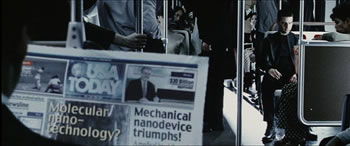When The Christian Science Monitor decided to discontinue its dead-tree edition and go Web only, there was a great deal of whining and wailing in the journalism world about the "end of an era" and other such nonsense cliches.
But the folks at Samsung Electronics and Unidym (owned by my old employers at Arrowhead Research) "have demonstrated the world’s first carbon nanotube-based color active matrix electrophoretic display (EPD) e-paper." The advantages, according to the companies:
EPDs have very low power consumption and bright light readability, which means that even under bright lights or sunlight, the user would be able to view the display clearly. Furthermore, since the device uses the thin CNT films, applications can include e-paper and displays with thin, flexible substrates. Power consumption is lowered due to the EPD’s ability to reflect light and therefore able to preserve text or images on the display without frequently refreshing. More here
Translation: Remember that scene in the movie "Minority Report," where newspaper advertisements are all animated and stuff? Yeah. This brings that world closer, for better or worse.
Translation 2: Don't worry about the loss of dead-tree newspapers and the rise of all-digital publications. You'll be able to take The Christian Science Monitor into your household "reading room" again soon.
Backgrounder
Customers Googled while newspapers burned
Hope in paperless newspapers (Detroit Free Press)
Possible wireless newspapers? (BoingBoing)


1 comment:
"...I remember the newspapers dying like huge moths. No one wanted them back. No one missed them..." Ray Bradbury, Fahrenheit 451
Post a Comment